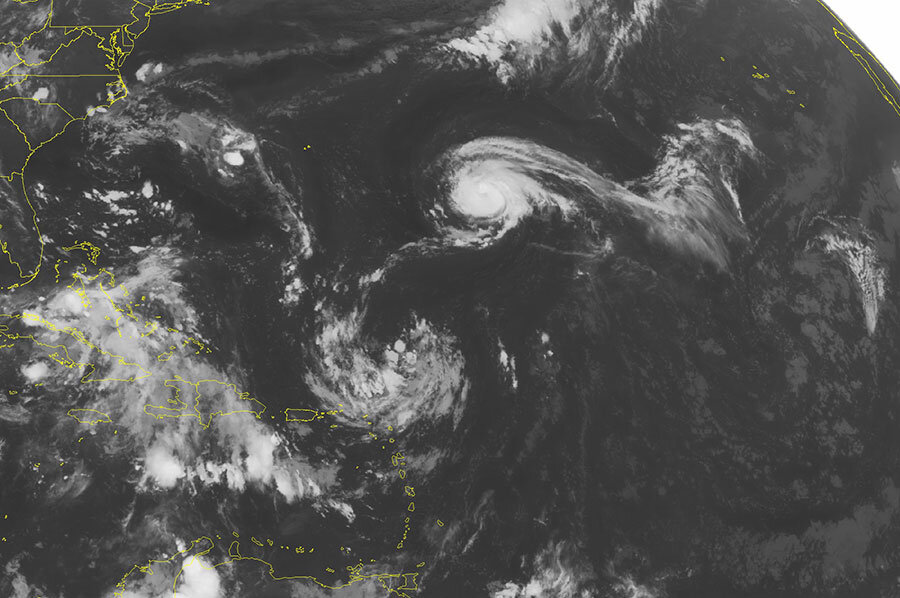A hurricane and twin tropical depressions form in Atlantic: Why now?
Loading...
Hurricane Gaston strengthened into the first major Atlantic hurricane of the season this weekend, as two tropical depressions also formed around the coast of the US.
Tropical Depression 9, which formed in the Florida Straits on Sunday, moved Monday into the southeastern Gulf of Mexico, with forecasters warning that it could turn into a tropical storm later in Monday or Monday night.
Meanwhile, Tropical Depression 8, which formed west of Bermuda, is moving toward the coast of North Carolina. That depression is expected to strengthen into a tropical storm overnight, threatening to bring rain and high winds to eastern North Carolina.
Hurricane Gaston, which reached category 3 status around the same time on Sunday afternoon that Tropical Depression 9 formed, has moved northwestward into the Atlantic, posing no threat to any land mass, forecasters say. On Sunday, the hurricane reached maximum sustained winds of 120 mph, but is expected to slowly weaken over the next two days.
The hurricane and tropical depressions come at the peak of the Atlantic hurricane season during a particularly active year.
"We've had six named storms so far, that includes Alex, but [no] major hurricanes yet," said Dennis Feltgen, with the National Hurricane Center, to Florida Today. "For the number of named storms and the number of hurricanes, we are running a little bit faster than an average year."
Florida has not been hit by a hurricane in eleven years, since Hurricane Wilma in 2005.
"That was not only the last major hurricane to hit Florida but the last hurricane," Mr. Feltgen said. "But that remarkable streak is going to end."
Though the Atlantic hurricane season technically began on June 1st, we're now in the midst of the "season within the season," a period lasting about eight weeks, from mid-August to mid-October, which is the most active – and dangerous – time for tropical cyclones. This period accounts for 78 percent of tropical storm days, 87 percent of category 1 and 2 hurricane days, and 96 percent of the major hurricane days.
Why now?
"There certainly is no lack of disturbances throughout the entire six-month hurricane season. Tropical waves are coming off of the coast of Africa roughly every three days, and the very early and late parts of the year provide additional types of potential seedlings," writes the National Oceanic and Atmospheric Administration (NOAA). "What’s different, though, is the environment that these potential tropical cyclones tend to encounter. Both dynamics (wind factors) and thermodynamics (temperature and moisture) play a role."
If it looks like a hurricane may be headed your way, the NOAA recommends familiarizing yourself with The Family Disaster Plan, available on the National Weather Service or the American Red Cross websites, putting together a supply kit filled with the essentials, and keeping track of storm and hurricane activity.
This report contains material from Reuters and the Associated Press.








